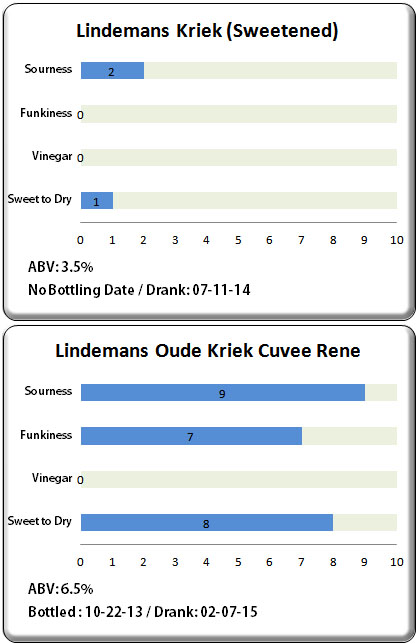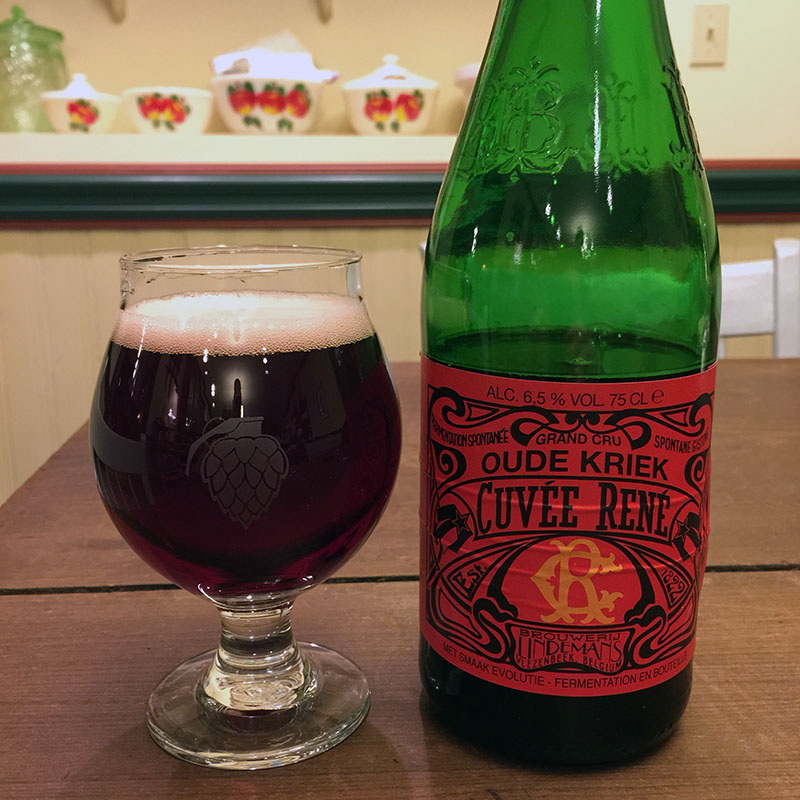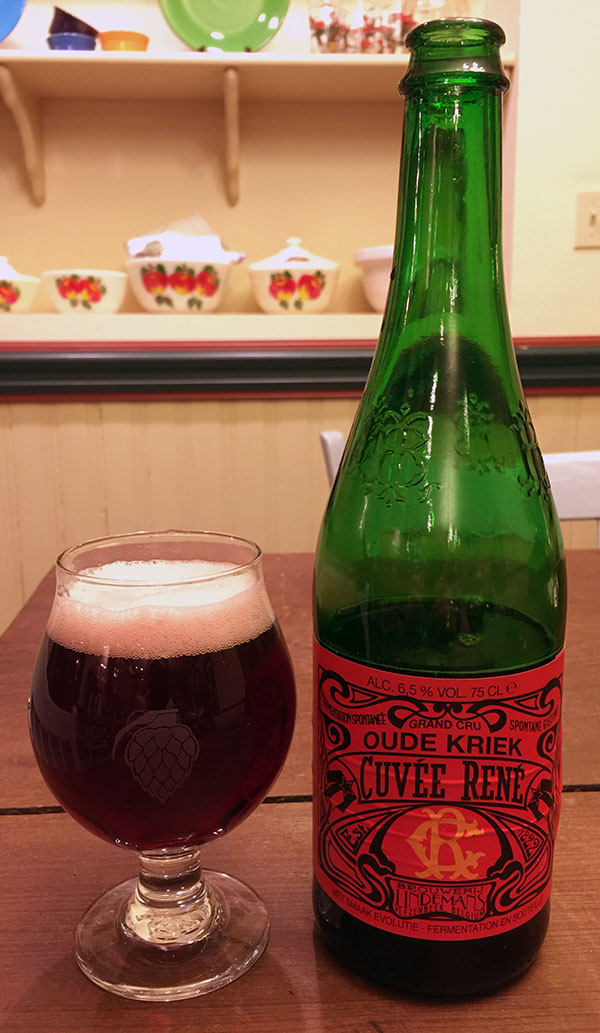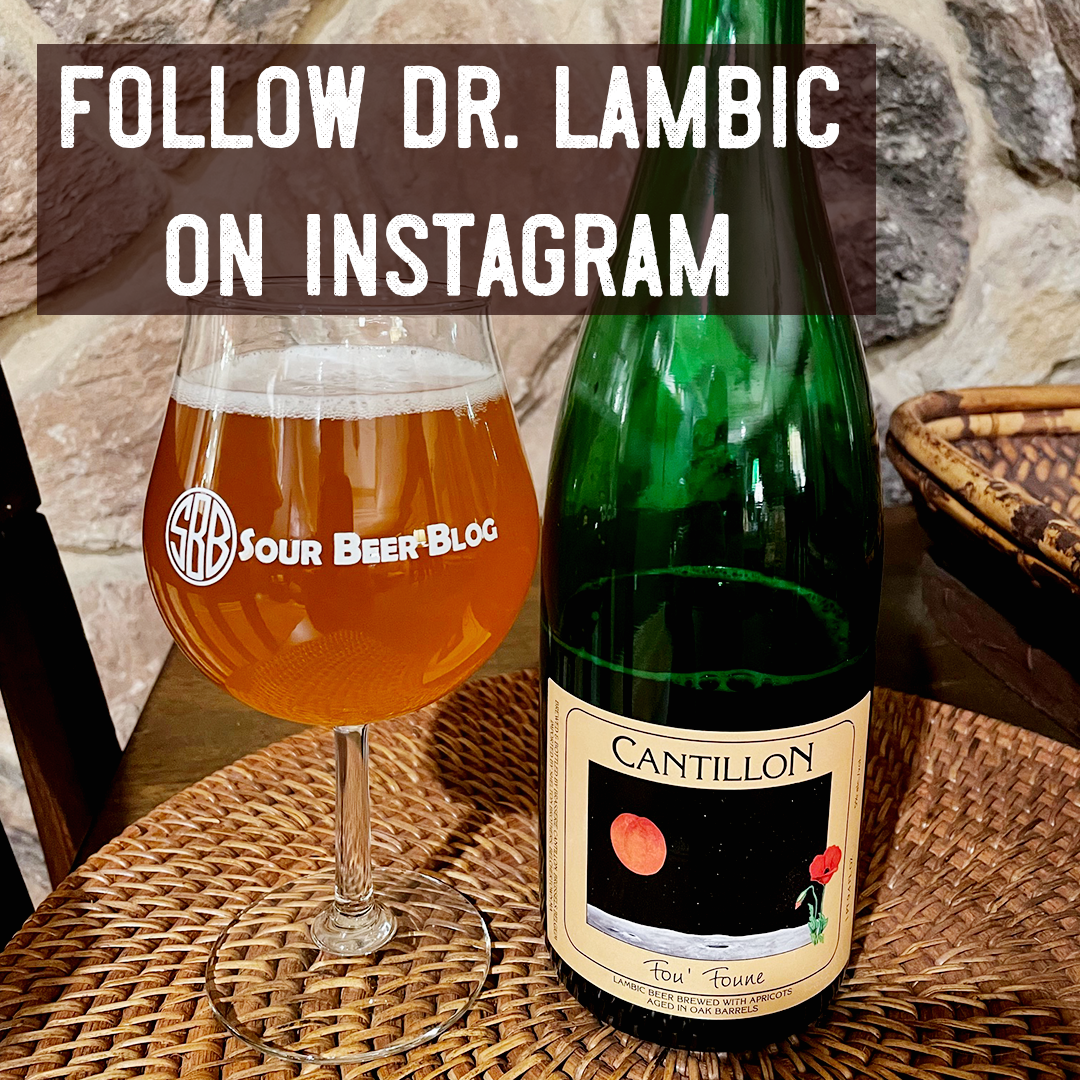Hello Sour Beer Friends!
Many craft and sour beer fans who live in the United States, myself included, experience their first taste of a lambic beer by trying one of Lindemans’ sweetened fruit lambics. Lindemans is a seventh generation lambic brewery located in Vlezenbeek, Beglium. The base lambic employed to blend their sweetened fruit products is brewed using a slightly modified version of the traditional lambic process which relies on more stainless steel aging vessels than oak casks. In the case of Lindemans’ standard kriek, this sour base beer is blended with 25% cherry juice, filtered, pasteurized, and then back-sweetened with the artificial sweetener Stevia. The resulting beer, which for myself and many others may be our first taste of a “lambic”, is intensely fruity, very sweet, only lightly sour, and low in alcohol content at 3.5% ABV. For what it is, Lindemans’ standard kriek is free of any off-flavors, brewing flaws, or defects. Despite this, Lindemans’ kriek and its other sweetened fruit beers are often a disappointment to drinkers who have read about traditional lambic beers, and are expecting a product that will be sour, dry, and funky.
Personally, I fell into this group of sour beer fans and had pretty much written off Lindemans’ fruit beers as “not my thing”. That is, until I hosted a sour beer tasting and dinner devoted entirely to the lambic kriek and oude kriek styles last summer. This night was my first time experiencing Lindemans’ Oude Kriek Cuvée René. This outstanding oude kriek is everything that their sweetened kriek is not. In fact, Lindemans’ website states that this is the beer that they are most proud to create. Oude Kriek Cuvée René is blended from lambic brewed using the same methods as their other fruit beers, but in this case whole cherries are added to the base lambic inside 10,000 liter oak foudres and allowed to ferment for 6 months before bottling. The beer is unpasteurized, receives no artificial sweetening, and referments in the bottle to produce a very sour, bone dry, highly carbonated beer that is loaded with wine-like cherry flavor and a moderate to high level of Brettanomyces funk. I have had several vintages of this beer and each has been slightly different but all have been excellent. Like all traditionally brewed lambics, this is definitely a beer that can be cellared. The bottle that I drank for my recent tasting was packaged in October 2013, so it was relatively young by lambic standards.
Oude Kriek Cuvée René poured a deep maroon red (appearing almost black) with a moderate volume of lightly pink head which faded fairly quickly. Aromas of cherry juice, cherry pie, vanilla, and musty basement were strongly present. More subtle were aromas of wet hay, leather, floral perfume, and white wine.
 When tasting Oude Kriek Cuvée René, the first impression that I had was of its very intense lactic acidity. In fact, this may be one of the most sour examples of an oude kriek on the market. The souring was strong but not harsh or solvent-like and I could detect no significant presence of acetic acid (vinegar) in the blend. The beer’s cherry flavors were intense but natural, taking on a very wine-like cherry profile backed by a high level of bitter almond flavor from the cherry pits. In both its wine-like character and high degree of almond flavor this kriek reminds me a lot of Drie Fonteinen’s Intense Red Oude Kriek, and it would not surprise me if around 40% cherries by weight were used in Lindemans’ blend as well. The beer’s Brettanomyces flavors put me in mind of wet dough, leather, and hay. The body was low to medium with a high level of carbonation. Like other great examples of oude kriek, this beer has a dry wine-like finish with some added complexity from fruit skin tannins.
When tasting Oude Kriek Cuvée René, the first impression that I had was of its very intense lactic acidity. In fact, this may be one of the most sour examples of an oude kriek on the market. The souring was strong but not harsh or solvent-like and I could detect no significant presence of acetic acid (vinegar) in the blend. The beer’s cherry flavors were intense but natural, taking on a very wine-like cherry profile backed by a high level of bitter almond flavor from the cherry pits. In both its wine-like character and high degree of almond flavor this kriek reminds me a lot of Drie Fonteinen’s Intense Red Oude Kriek, and it would not surprise me if around 40% cherries by weight were used in Lindemans’ blend as well. The beer’s Brettanomyces flavors put me in mind of wet dough, leather, and hay. The body was low to medium with a high level of carbonation. Like other great examples of oude kriek, this beer has a dry wine-like finish with some added complexity from fruit skin tannins.
Overall, Oude Kriek Cuvée René is a delicious sour beer and an excellent example of a traditional lambic kriek. Every example of the style will have its own nuances which make them unique, not only between brands, but also between different vintages from the same maker. Personally, I could drink a bottle of this kriek on practically any occasion. It is a very well made beer and it reminds me of the continued lambic brewing and blending skills of the Lindemans family. Unfortunately for those of us living in the United States, this beer is not currently imported by Lindemans stateside importer, Merchant Du Vin. If you are traveling to Europe, don’t pass up the opportunity to taste this excellent lambic. If you live in the United States and would like to see this beer imported, click below!
Cheers!
Matt “Dr. Lambic” Miller
2016 Update:
Check out our discussion of Cantillon’s Kriek 100% Lambic Bio for more information about the lambic brewing process and how a traditional kriek is created.
To learn more about the Oude Kriek style and how to brew and blend your own, click here.
For a comparison of 20 different lambic krieks, check out my Kriek Tasting and Dinner!






